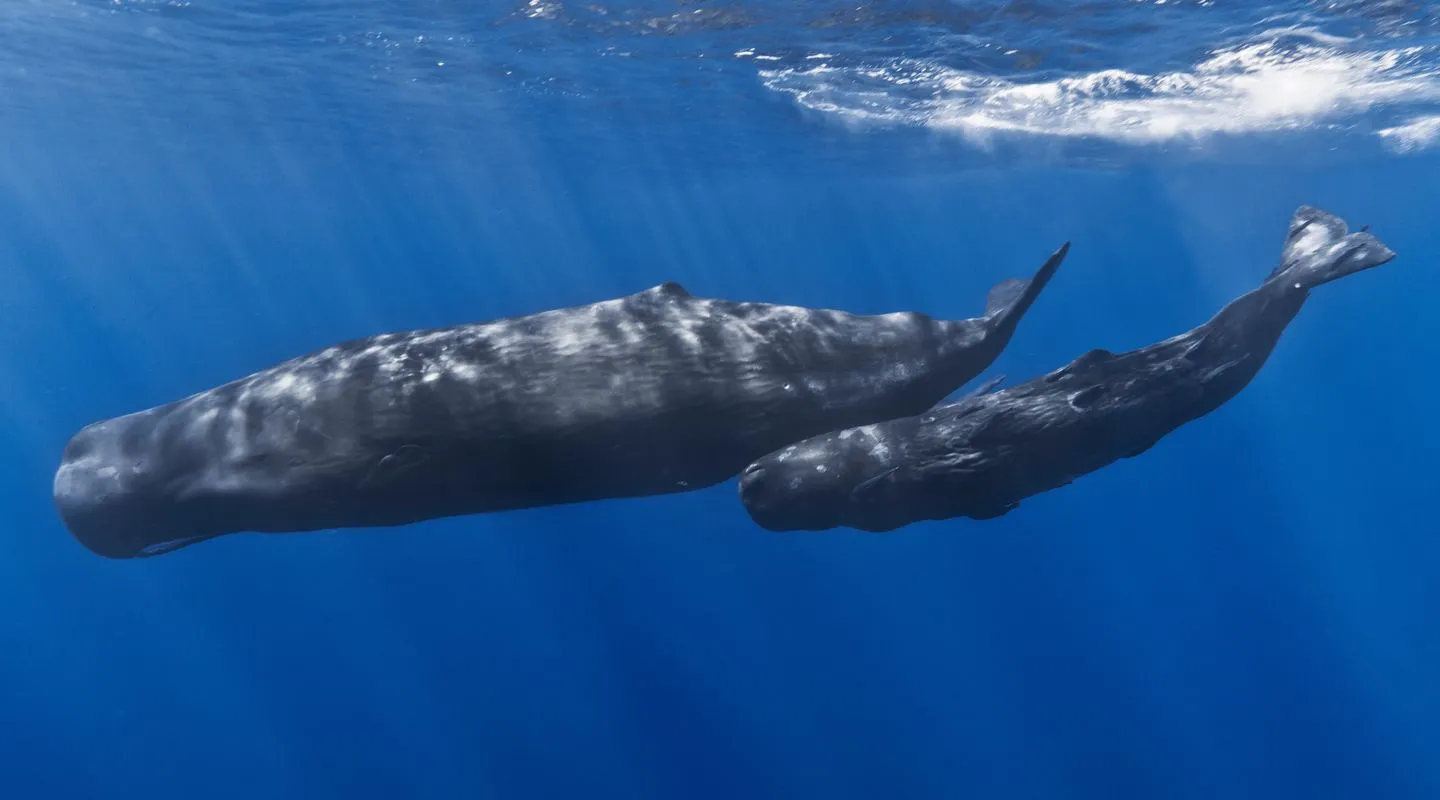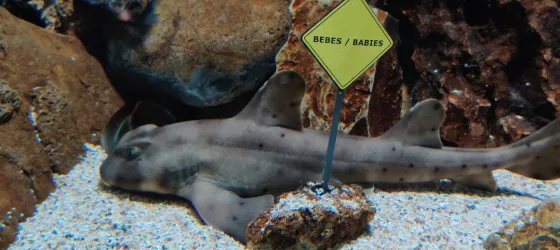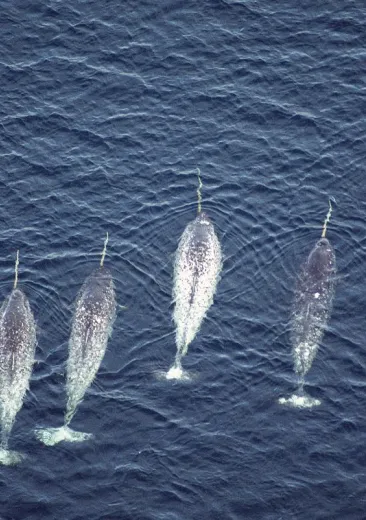At Nausicaá, the sperm whale appears virtually in the In the Eye of the Climate exhibition.

Sperm whale
Virtual animals

Identity card
Sperm whale
- Scientific name:
- Physeter macrocephalus
- Family:
- Physeteridae
- Class:
- Mammal
- Phylum:
- Chordata
- Year of description:
- Linnaeus, 1758
- IUCN Status:
- Vulnerable
- CITES-status:
Appendix I
- Distribution:
-
From the equator to high latitudes, although it is found on the continental slope or in deeper waters.
- Habitat:
-
Males are generally found in cold, food-rich waters, while females are found in equatorial or subtropical waters.
- Size:
Males measure between 15 and 18 m and females between 10 and 13 m.
- Diet:
-
Mainly large squid (80% cephalopods)
- Longevity:
70 years

With a brain weighing about 9 kg, the sperm whale has the heaviest brain in the animal kingdom.
Ambergris is a concretion found in the intestine of sperm whales and is used as a fixative in perfumes. It is used to coat the beaks of cephalopods, which are the main food of sperm whales, in order to limit irritation to the intestinal wall.
did you know?
Where is the animal to be found?
Sperm whales are found in oceans all over the world. Females live in groups of 10 to 50 individuals in equatorial or subtropical waters, whereas males are solitary and are generally found in cold waters that are rich in food.
From the equator to high latitudes, although it is usually found on the continental slope or in deeper waters, as well as in the Mediterranean Sea, the Sea of Okhotsk, the Gulf of California and the Gulf of Mexico.
How can it be recognised?
The sperm whale is characterized by a massive body shape with a huge head that represents a quarter of its total body length. Males join females during the breeding season. They often bear marks or scars from fighting with each other or with giant squid.
The sperm whale reaches full maturity at around 25 years of age. Females give birth after a gestation period of 14 to 16 months. They nurse their young for 12 to 20 months, feeding them a highly fatty milk, up to 20 kg per day. When born, the calves measure between 3.5 and 4.5 m and weigh one metric ton.
What is distinctive about it?
The sperm whale seems to be able to dive to a depth of 2,000 to 3,000 m. It can stay for 5 to 15 and sometimes up to two hours below the surface of the water.
Threat and protective measure
Its head also contains the spermaceti organ, which produces a waxy liquid and can weigh up to 5 metric tons. It plays a role in the sonar system of the sperm whale, but also acts as ballast. This material was highly prized by sperm whale hunters because it was used to make candles, soaps and cosmetics. Sperm whale hunting has been banned since 1982 by the International Whaling Commission.
Where can I find it at Nausicaá?
In the Eye of the Climate

Marine Mammal
The Ocean Mag
Browse through our Ocean Mag
In the spotlight
Le saviez-vous ? Les coulisses de la reproduction à Nausicaá en 2025
Poissons, crevettes, requins, les animaux qui se reproduisent ou sont élevés à Nausicaá rejoignent les espaces d'exposition.

Article
Egg stories, reproduction strategies in marine animals
Which came first, the egg or the fish? A brief overview of eggs and reproductive strategies in marine animals.
Article
10 things you need to know about coral
Coral, the planet's largest builder, is a fragile and threatened animal.

